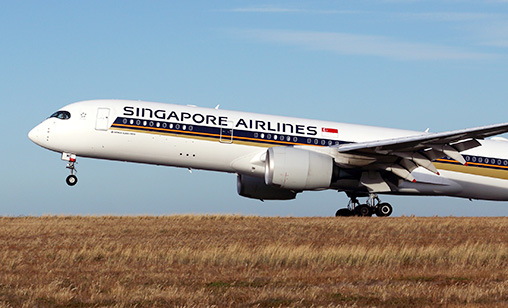Orient Aviation 2020 Year in Review
December 1st 2020
MAY
The financial red ink continued to flow this month, led by the Asia-Pacific’s two most prominent carriers, Cathay Pacific Group and SIA group’s three airlines. Read More » Mid-month, SIA reported the first full-year loss in its 48-year history after a disastrous final three months of its fiscal year. To illustrate the carnage, the net loss of S$721 million (US$537 million) for the three months to March 31 was more than three times the full-year net loss of S$212 million.
“Gains from the first nine months were wiped out by the decline in the final quarter from global travel restrictions and border controls which led to a collapse in demand for air travel,” SIA senior vice president for finance, Stephen Barnes, said.
 |
The news was just as bleak in Hong Kong where Cathay Pacific announced it had lost HK$4.5 billion (US$581 million) in the four months to April, and added there was no sign of a meaningful recovery ahead. It was operating 3% of its normal capacity in May.
Both Cathay Pacific and SIA began a review of their operations aimed at being competitive when the market recovered.
Thailand’s prime minister, Prayuth Chan-o-cha, said Thai Airways International (THAI) would undergo a corporate restructuring process via the country’s Central Bankruptcy Court.
While the government had considered three options for the loss-making flag carrier – providing financial support, letting the airline collapse or putting THAI through a bankruptcy court-led restructuring – General Chan-o-cha said there were other demands for government funds that had higher priority. A former successful president, Piyasvasti Amranand, returned to THAI as a board director along with three other new directors.
Korean Air said it would raise 2.2 trillion won (US$1.8 billion) to boost liquidity, made up of 1.1 trillion won from a share issue and 1.2 trillion won in government aid through the Korea Development Bank and The Export-Import Bank of Korea. “Korean Air will continue to carry out self-rescue measures to overcome the dismal business environment due to COVID-19,” the airline said.
Indian airlines resumed domestic flights after the government lifted a suspension that had been in place since late March. However, the Ministry of Civil Aviation placed a 33% cap on capacity.
IATA warned ticket prices could jump by 50% if airlines were forced to keep social distancing rules such as blocking the middle seat in place. Figures from the airline lobby group showed only four airlines out of a sample of 122 carriers would have made money under such rules.
Rather than empty middle seats, IATA supported mandatory face-coverings for passengers and masks for crew among a package of measures to reduce the risk of contracting COVID-19 on board an aircraft.